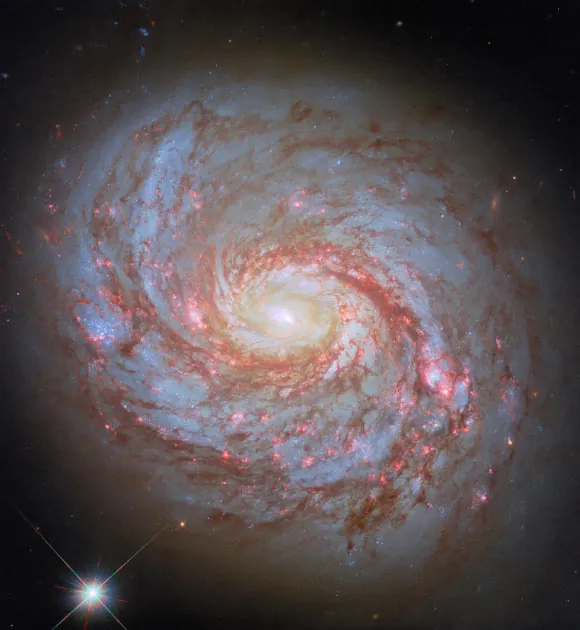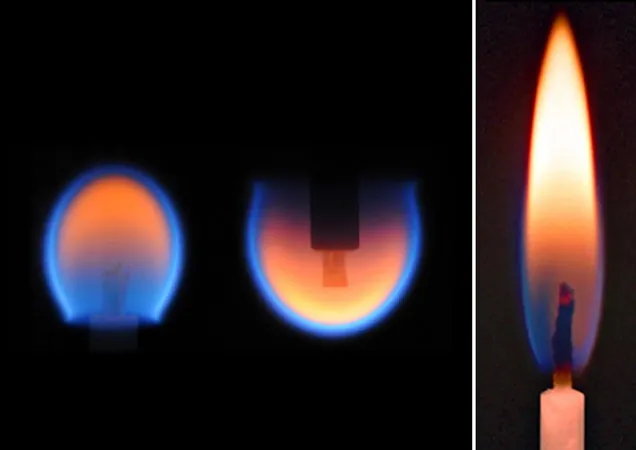
Stunning New Hubble Image Captures the Squid Galaxy: Messier 77
2025-04-14
Author: Li
NASA has unveiled a breathtaking new image from the Hubble Space Telescope showcasing the mesmerizing barred spiral galaxy known as Messier 77.
A Celestial Wonder 62 Million Light-Years Away
Positioned an astonishing 62 million light-years from Earth in the constellation Cetus, Messier 77—affectionately dubbed the Squid Galaxy—holds a special place in our cosmic understanding.
Discovering the Squid Galaxy
Discovered back in 1780 by French astronomer Pierre Méchain, this galaxy was originally classified as a nebula. Méchain relayed his discovery to fellow pioneer Charles Messier, who initially assumed the bright object was merely a cluster of stars.
From Nebula to Galaxy: A Misclassification Revealed
As telescope technology advanced, astronomers soon realized that what they thought were mere nebulae were, in fact, vast galaxies, including Messier 77.
Hubble astronomers remarked, "The designation Messier 77 arises from its entry in the renowned catalog established by Charles Messier himself. Méchain’s original classification illustrates how early comet hunters documented objects that misled them into thinking they were comets."
An Imposing Presence in the Universe
At a staggering 100,000 light-years in diameter, Messier 77 stands as one of the largest galaxies in the Messier catalog. Its massive gravitational pull even warps neighboring galaxies!
The Brightest of the Active Galaxies
What makes Messier 77 particularly intriguing is that it hosts an active galactic nucleus (AGN), making it one of the brightest examples in the cosmos. Such galaxies radiate energy across the electromagnetic spectrum, from gamma rays and X-rays to microwaves and radio waves.
The Enigmatic Appearance of the Squid Galaxy
Despite its popularity among astronomers, the galaxy's active center is often shrouded by dense clouds of dust and gas, complicating observations.
The evocative nickname "Squid Galaxy" emerged recently, likened to the galaxy’s extended, filament-like structures that curl around its disk, resembling squid tentacles.
A Testament to Astronomical Evolution
The journey of Messier 77 serves as a potent reminder of how technological advancements and evolving scientific insights can transform our perceptions of the universe—changing not just the way we view such cosmic wonders but even how we name them.




 Brasil (PT)
Brasil (PT)
 Canada (EN)
Canada (EN)
 Chile (ES)
Chile (ES)
 Česko (CS)
Česko (CS)
 대한민국 (KO)
대한민국 (KO)
 España (ES)
España (ES)
 France (FR)
France (FR)
 Hong Kong (EN)
Hong Kong (EN)
 Italia (IT)
Italia (IT)
 日本 (JA)
日本 (JA)
 Magyarország (HU)
Magyarország (HU)
 Norge (NO)
Norge (NO)
 Polska (PL)
Polska (PL)
 Schweiz (DE)
Schweiz (DE)
 Singapore (EN)
Singapore (EN)
 Sverige (SV)
Sverige (SV)
 Suomi (FI)
Suomi (FI)
 Türkiye (TR)
Türkiye (TR)
 الإمارات العربية المتحدة (AR)
الإمارات العربية المتحدة (AR)